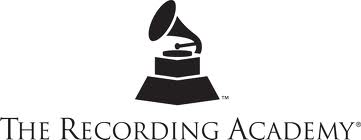
The Soul Of Analog
Despite digital technology’s infinite possibilities, some artists and audio professionals prefer recording in an analog environment
By Dan Daley / GRAMMY.comWhen three-time GRAMMY-winning producer/engineer Joe Chiccarelli heads into the studio to work with artists such as Manchester Orchestra, My Morning Jacket, Counting Crows, or the Shins, he steps into a bit of a time machine. Chiccarelli is transported back to an era of music-making that involves huge reels of two-inch tape spooled on to half-ton multitrack decks.
"If you have the budget for it, analog has a particular sound, a color that is just fantastic for rock music," says Chiccarelli. "When musicians hear their mixes played back on analog tape, it sounds vintage to them, like an old Marshall amp. It’s the glue that holds the bottom-end together on a record."
After two full decades in which digital formats have been arguably the primary music recording methodology, analog has made a comeback. Recent recordings from John Mellencamp, Elton John and Leon Russell, Taylor Swift, and the Secret Sisters were recorded completely on analog tape. Other artists, including four-time GRAMMY winner Lenny Kravitz and nine-time GRAMMY winner Jack White, have spent most of their careers in an analog environment.
Three-time GRAMMY winner Vance Powell, a Nashville-based engineer/producer who has collaborated with White, says their recordings have been on analog tape exclusively.
"We’ve never done a project that was not recorded to tape," says Powell, citing White’s projects with the Raconteurs, the Dead Weather and Wanda Jackson. Powell feels that analog tape’s finite track count, which maxes out at 24 tracks per two-inch reel, encourages artists and producers to make aesthetic decisions as the recording progresses, instead of letting the nearly infinite track capabilities of digital workstations allow these artistic decision points to mount.
"Using tape is a constant decision-making process," says Powell, noting the Studer A800 8-track deck that he and White often use necessitates constant "bouncing" (combining several tracks to one or two of recorded tracks) to make way for new tracks, with each bounce constituting a sub mix of the final mix.
"Digital is like Stephen Hawking — all mathematics and numbers," he says. "The analog world is God-based and has its own ebb and flow."
To some artists and audio professionals, analog’s resurgence represents a pushback against years of dynamic limitations imposed by compressed formats such as the MP3 and playback environments comprised of earbuds and MP3 players. To others, analog is an additional color within the technology palette capable of being added to recordings that are still being recorded digitally, via an array of modeling plug-ins that are digital recreations of classic analog audio processors, including Universal Audio’s software versions of the Teletronix LA-2A Classic Leveling Amplifier or Fairchild 670 Compressor.
But hardcore fans of analog insist the warmth and dynamic characteristics of tape can only be fully realized by working with tape on a tape deck.
However, authenticity comes at a cost. According to Mike Spitz, owner of both ATR Services, a company refurbishing vintage analog decks, and ATR Magnetics, which manufactures tape for them, a premium two-inch reel of analog tape can cost as much as $300, more than twice the cost a decade ago.
Availability is also a factor. Quantegy, the last major U.S.-based tape maker, closed down its industrial manufacturing operations in Opelika, Ala., in 2005, ending cost-effective mass production of half-inch, one-inch and two-inch professional configurations of reel-to-reel tape media. Engineers and producers today must rely on boutique companies, including ATR Magnetics and Netherlands-based RMG International, for supply.
Analog hardware is also costly. A vintage multitrack deck such as a Studer A827 costs $7,000 or more to buy and another $10,000 or more to refurbish, and the number of salvageable professional decks has dwindled over time, as have expensively machined replacement parts. In addition, unlike digital’s random-access capability, analog’s workflow is both linear and mechanical — tape must be constantly shuttled back and forth for retakes and overdubbing.
But for some, the cost of working under analog’s inherent limitations is worth it.
"Musicians are willing to pay that now, because they know how much better it sounds," says Don Morris, director of sales for RMG International.
Adding another challenge in the studio environment, analog and digital technologies are not compatible. Like many producers, Chiccarelli routinely tracks with Pro Tools and then mixes to analog, which mitigates tape costs.
A recent innovation also offering flexibility is the Closed Loop Analog Signal Processor, developed by Chris Estes, founder/president of the Nashville-based company Endless Analog. With a cost of approximately $7,000, CLASP is essentially an analog front-end to a digital audio workstation, offering the best of both worlds.Producer Butch Walker, who has worked with artists including Avril Lavigne and Katy Perry, had nearly given up on analog due to the cost of tape and machine maintenance. He purchased a CLASP system last year and has since used it to track recent projects with Pink, Panic! At The Disco and his own band, Butch Walker And The Black Widows.
"It’s great being able to go back to analog again," says Walker. "Brendon [Urie] of Panic! [At The Disco] flipped out when we made the switch from digital to analog mid-project. He noticed the difference immediately. There’s a kind of comfort that you get when working on tape. There’s a soul to it that you can’t understand till you’ve used it."
(Dan Daley is a freelance journalist covering the entertainment business industry. He lives in New York and Nashville.)




